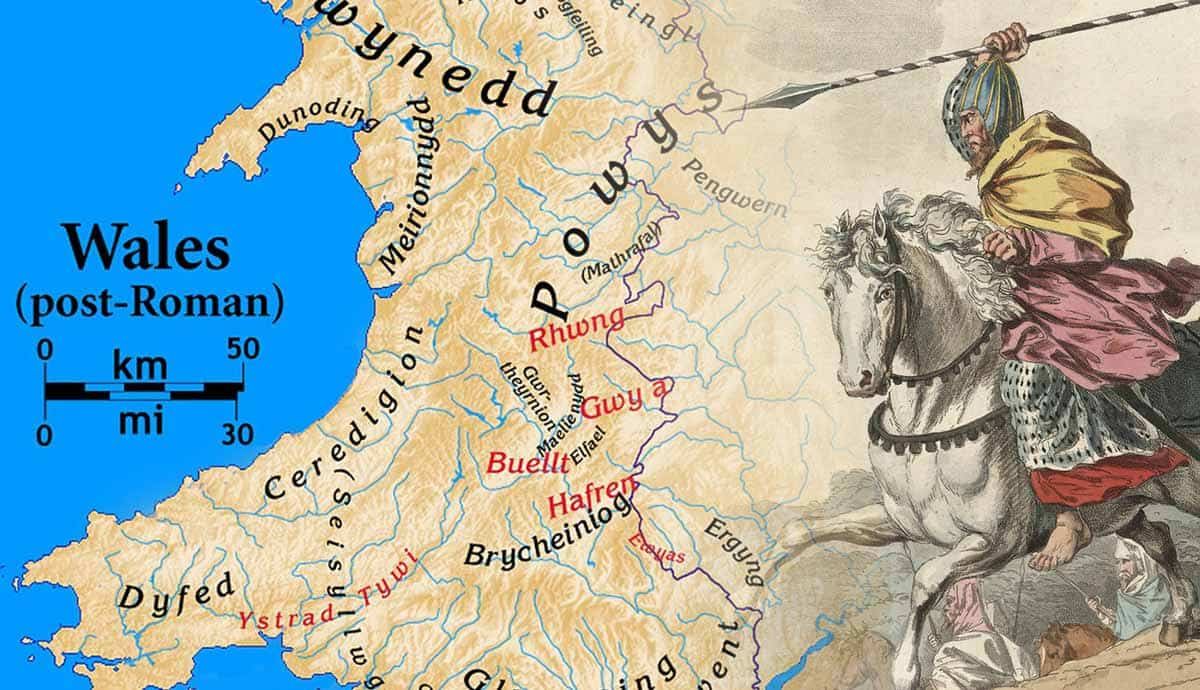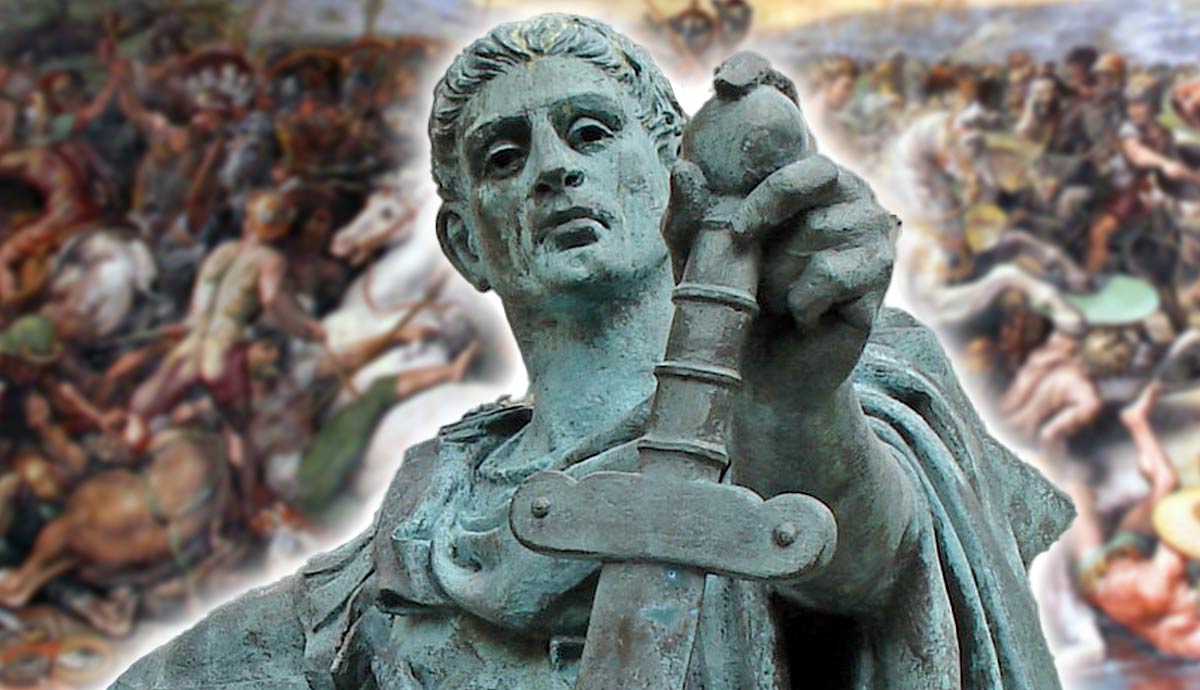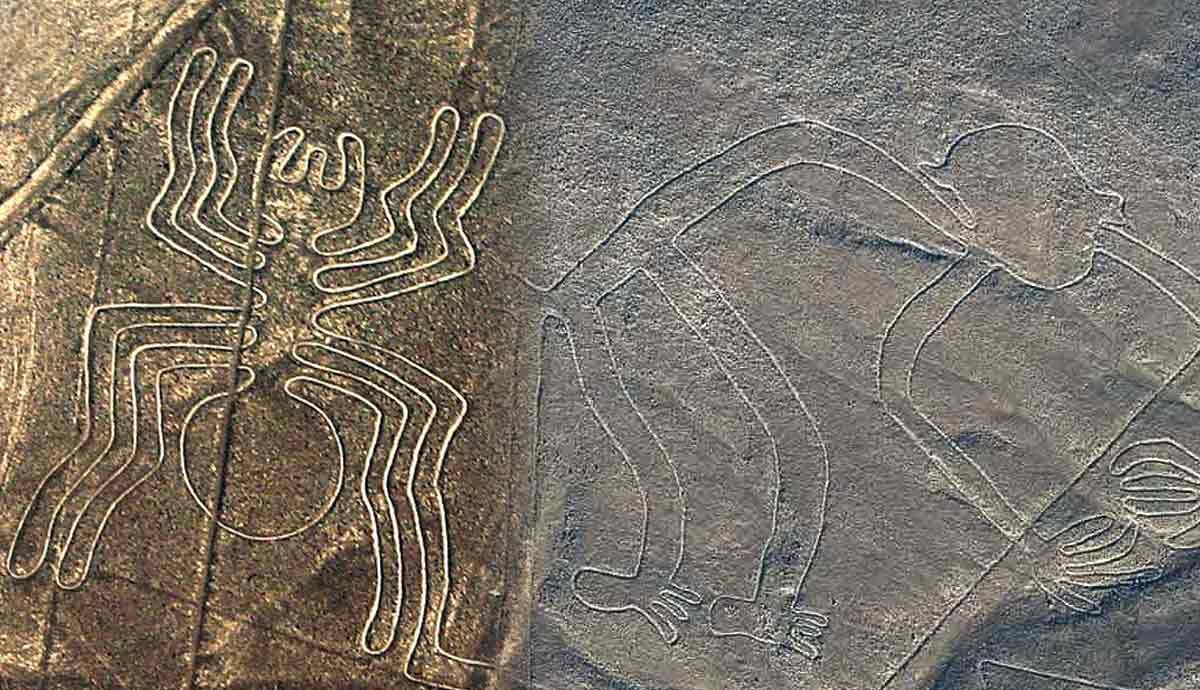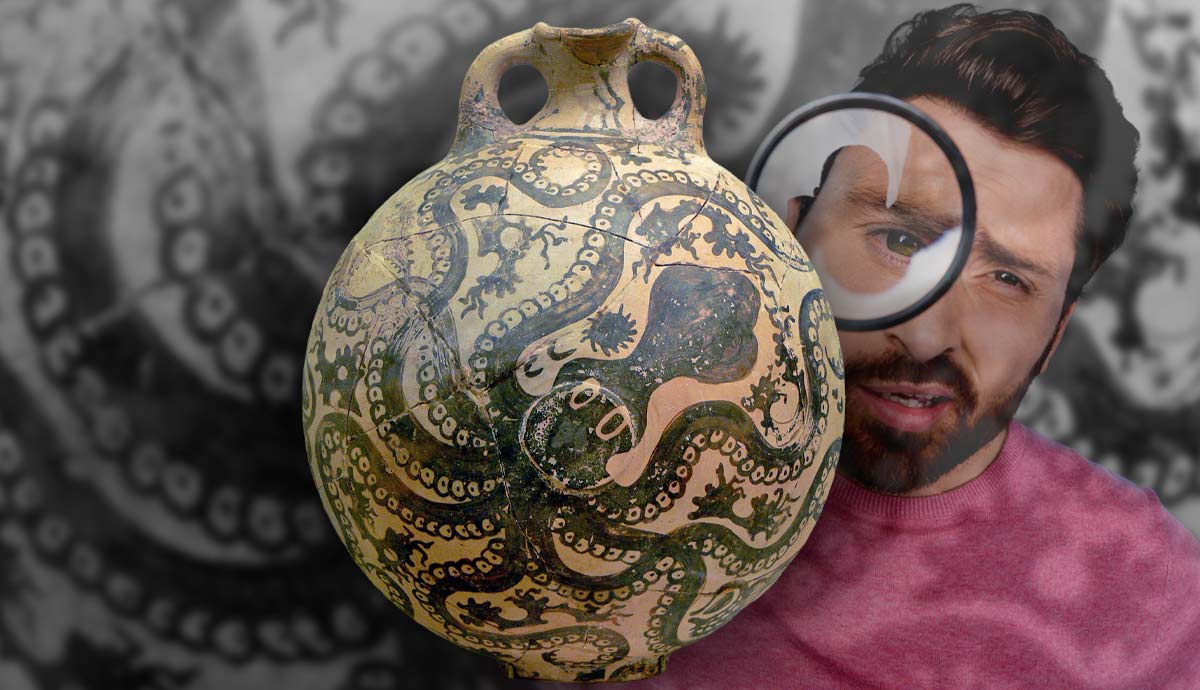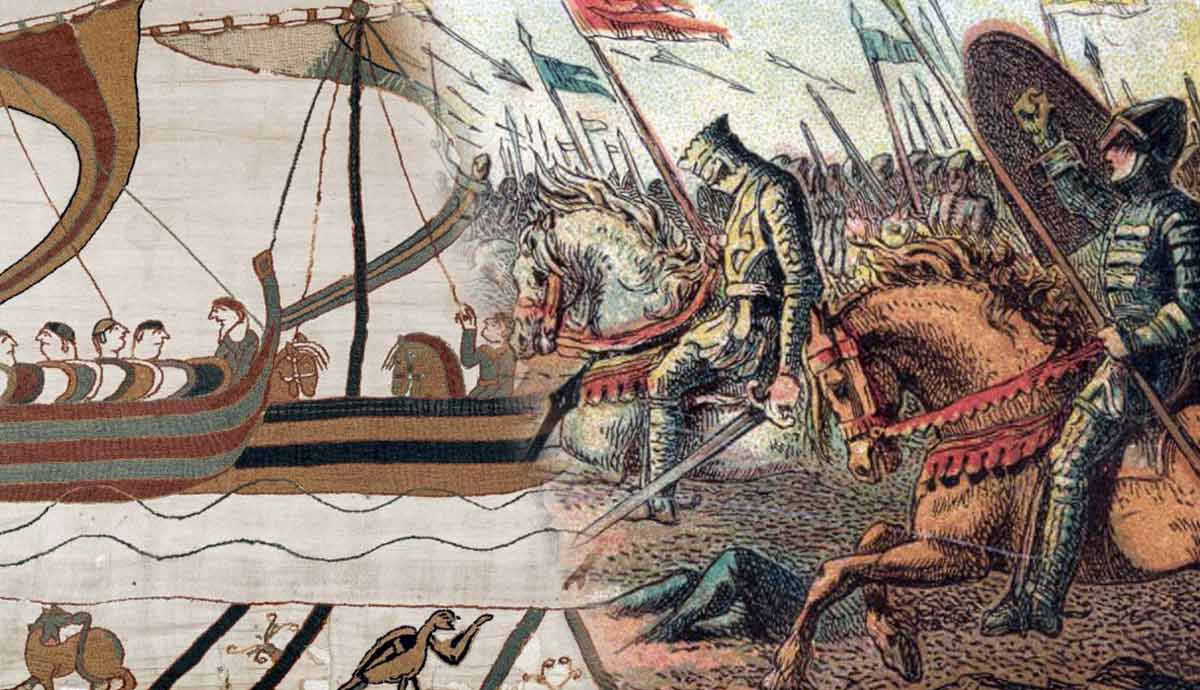
The Arthurian legends contain many accurate pieces of information from the historical era in which they are set. One of the most fascinating things about investigating this corpus of literature is to try to discern myth from fact, especially regarding the most famous stories.
The legend of Tristan and Isolde is a particularly famous part of the Arthurian legends. This story, about which many modern films have been made, portrays the love between the two titular characters. Tristan is a Brythonic prince, and Isolde is an Irish princess. Isolde was originally meant to marry King Mark, the evil uncle of Tristan. However, a magic potion causes Tristan and Isolde to fall in love with each other. This leads to considerable conflict with King Mark. But is this story based in fact?
The Pictish Tristan of Welsh Tradition

To start with, it is worth looking at how Tristan appears in Welsh tradition. His portrayal there is very different to how he appears in the tale of his romance with Isolde, which primarily comes from French sources. Tristan appears in a collection of Welsh traditions known as the Welsh Triads. This contains numerous references to traditions concerning King Arthur and his associates, although it is not exclusively about that. In this record, Tristan appears a number of times as a powerful battle leader and lover of Essyllt (Isolde) in the time of Arthur.
However, this record spells Tristan’s name as “Drystan,” as do other Welsh records which mention him. Additionally, the name of his father is given as “Tallwch.” This is very useful information. Rachel Bromwich, the renowned scholar of medieval Welsh literature, wrote the following:
“I find it impossible not to associate the names of both Drystan and of Tallwch with the Pictish names Drust, Drest, Drostan… and Talorc, Talorcan, Talargan.”

As Rachel Bromwich noted, these names appear in Pictish regnal lists. Therefore, this raises the strong possibility that Tristan, or “Drystan” to the Welsh, was actually a historical Pictish king or prince of the era. There was a historical Drest who was the son of a certain Talorgan. However, he lived in the eighth century. While the Drystan son of Tallwch of Welsh tradition could have been anachronistically pulled from the eighth century, such a conclusion is unnecessary.
Medieval Welsh records show the descent from father to son by using the word “ap.” In the case of Drystan, for example, he appears as “Drystan ap Tallwch.” However, this word is sometimes used with the meaning of “successor of” rather than “son of.” Some examples of this are seen in the early Harleian MS 3859. Notably, there was a Drest who succeeded a Talorc in the sixth century. This was Drest V, the son of Munait but successor of Talorc II. He can most likely be identified as the Drystan of Welsh tradition. He ruled for just one year in 549-550.
The Tristan of French Romance

However, the Tristan of Welsh tradition is not necessarily entirely the same as the Tristan of French romance. Of course, it is clear that they are meant to be the same figure. As already noted, the Welsh Triads specifically link Drystan son of Tallwch with Essyllt, that is, Isolde. Nonetheless, the information about Tristan from the legend of Tristan and Isolde makes it clear that it has nothing to do with a Pictish king. It is very probable that two different figures have been combined in Welsh tradition. Notably, the non-Welsh sources never call Tristan’s father “Tallwch.”
The earliest version of the legend of Tristan and Isolde, written by Thomas of Britain in the twelfth century, presents the name of Tristan’s kingdom as “Armenie.” The capital of the kingdom is specifically said to be on the English Channel. Thus, it is evident that “Armenie” is a corruption of “Armorica,” another name for Brittany. This Tristan is thus a Breton prince, not a Pictish one.

Originally, it appears that Tristan’s father was named Riwalin. We see this, for example, in the account by Thomas of Britain, writing in the middle of the twelfth century. We also see it in the version by Gottfried von Strassburg, who was writing right at the beginning of the thirteenth century. This version calls Riwalin the lord of “Parmenie,” which is evidently a corruption of the earlier “Armenie.” Was there a historical king of Brittany by this name? A variety of medieval historical records attest to the fact that there was a king of Brittany in the early sixth century by the name of Riwal. Therefore, he is undoubtedly the Riwalin of the Tristan tale.
However, subsequent tellings of the tale, written just a few decades later, give Tristan’s father a different name. They call him “Meliadus,” with “Meliodas” being a common form of the name used in modern sources. He appears in the Prose Tristan of the thirteenth century and subsequent versions. What can we conclude based on this?
The Identity of Tristan’s Father

Interestingly, it appears that we can identify a historical Meliadus just like we identified a historical Riwalin. One detail that helps is the fact that Meliadus was said to have had a son by the same name as him, known as Meliadus the Younger. In the Life of St Melor, found in at least one fourteenth-century manuscript, the titular saint is called the son of a certain Meliavus, a prince of Brittany. It is very tempting to conclude that this Meliavus prince of Brittany was the Meliadus of Brittany from the legend of Tristan and Isolde. Meliavus’ son Melor (spelled “Melaire” in one record) is also tantalizingly similar to Meliadus the Younger from the Tristan legend.
Even more interestingly, Meliavus is recorded as being the brother of a king named Rivold. It seems very likely that this Rivold was identical to the King Riwal of Brittany from other sources. This would mean that both legendary fathers of Tristan in the romance tales were historical brothers.

With this in mind, it is likely that the Prose Tristan’s account of Meliadus (which is the earliest one) describes the death of Meliadus when Tristan is about eight years old. Thus, Tristan must have subsequently had a guardian, a stepfather of some kind. Although the Prose Tristan does not name him as such, if this was Riwalin, that would explain the discrepancy between the two different fathers given to Tristan in the legends. Historically, the Life of St Melor tells us that Meliavus was killed while Melor was young. This is likely related to the origin of the legend of Meliadus dying while Tristan and Meliadus the Younger were children. Furthermore, it would be perfectly expected for the historical Meliavus’ brother, Rivold (or Riwal), to have taken over guardianship of the boys. This would thus explain why, in the legend of Tristan and Isolde, Tristan is sometimes made the son of Riwalin and sometimes made the son of Meliadus.
The Historical Tristan

Nonetheless, none of the records about the historical Riwal or Meliavus ever mention a child called Tristan. Does this mean that Tristan was not a historical figure? Not necessarily. Something that virtually all the versions of the legend of Tristan and Isolde agree on is the fact that Tristan was closely associated with his uncle, King Mark. He was said to have gone to King Mark’s court fairly early on in his life, and his father Riwalin also dies early on in the tale. Perhaps, then, he was actually adopted by King Mark. This brings us to a very striking discovery.
In Cornwall, there is a large stone monument called the Tristan Stone. It is a memorial stone, and its size attests to the importance of the person it commemorates. The reading is difficult, but the most recent scholarship on the subject agrees that it preserves the name “Tristan.” It calls the Tristan in question the son of “Cunomorus.” Significantly, the stone dates back to the sixth century, the time of the legendary Tristan.

The name “Cunomorus” instantly connects this stone to Conomor, a historical ruler of Brittany in the mid sixth century. The ninth-century Life of St Paul Aurelian refers to a sixth-century king named Quonomorus and refers to the fact that his domain included people of four different languages. This supports the idea that this king ruled over parts of Brittany and Britain (such as Cornwall). What is even more significant is the fact that the Life of St Paul Aurelian specifically says that this king was also named Mark.
Putting all this information together, we have a situation where there was a historical, sixth century Tristan recorded as the son of Conomor. This Conomor, in turn, appears to be identical to King Mark. Confirming these connections is the fact that King Mark was supposedly Tristan’s uncle by marriage, according to the legend. The historical Conomor, meanwhile, is recorded as being married to the sister of Meliavus, the historical origin behind Tristan’s legendary father Meliadus.
The History Behind the Legend of Tristan and Isolde

In conclusion, the legend of Tristan and Isolde is set in sixth-century Britain; not many historical records survive from that period, but we do have some information with which to assess the legends. It appears that a variety of characters from the legend of Tristan and Isolde can be identified as historical people. Some versions of the tale call Tristan’s father Meliadus, while others call him Riwalin. It appears that they can be identified as the historical Breton figures Meliavus and Riwal, respectively. Tristan’s uncle by marriage, King Mark, can be identified as the historical brother-in-law of Meliavus and Riwal, the tyrant named Conomor. Tristan himself appears to be identified as the son of Conomor on a sixth-century memorial stone. There is reason to believe that he was actually the adopted son of Conomor, although we cannot confirm this. Furthermore, the Tristan of Welsh tradition was partially drawn from another historical figure, the Pictish king Drest V.

